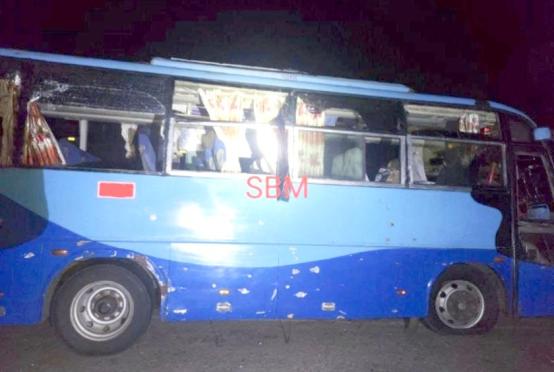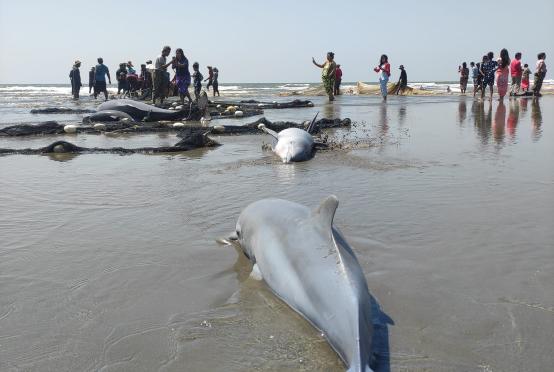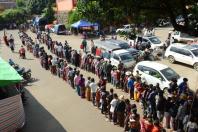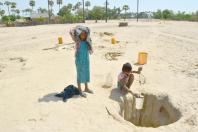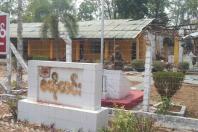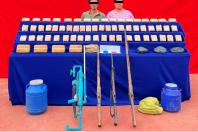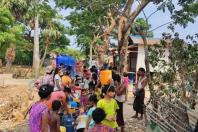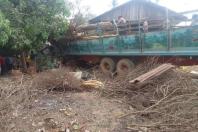
At least 10 helicopters returning to Kathmandu from Lukla Airport, the gateway to Mount Everest, were forced to land in various locations near Kathmandu Valley on Tuesday morning when the weather suddenly deteriorated.
Videos and photographs on social media showed most of the choppers carrying foreign trekkers from Lukla had landed in the paddy fields in villages.
This is not the first time choppers returning from Lukla have been either grounded or have had to make such landings due to inclement weather.
In November 2011, more than 3,000 tourists were stranded in Lukla after adverse weather conditions halted flights from Kathmandu for six consecutive days. It is a recurring problem every year.
But such disruptions may be a thing of the past, as a plan to open an asphalted motorable road up to the Everest region has sprung to life after a brief hiatus.
According to Ganesh Ghimire, chief administrative officer of Khumbu Pasang Lhamu Rural Municipality in Solukhumbu, the track opening work from Khari Khola, at 2,100 metres, to Chaurikharka, about three kilometres from Tenzing–Hillary Airport in Lukla, has already begun. Officials expect the track opening work to be completed by July next year.
“The first phase—a track up to Khari Khola from Phaplu—has been completed,” Ghimire told the Post. “We plan to complete blacktopping by 2021.”
Ghimire said contractors have already started work on the track from Khari Khola to Chaurikharka. “Likewise, a separate contractor has been mobilised for the construction of a bridge over Dudh Koshi River,” he said.
The government had first decided to open a track linking the Everest region after the 2011 incident to ensure that nobody gets stranded for days on end due to disruption of flights.
Dubbed the Highway to Everest, the project started in 2014, but it hit a roadblock after the 2015 earthquakes.
After the 2017 elections that installed local governments, Khumbu Pasang Lhamu Rural Municipality took the initiative to take the road project forward.
Locals from the region had long been calling on the government to move the project ahead, citing high costs of commodities, flight service unpredictability and dangerous flights to Lukla Airport, which is considered one of the most dangerous airports in the world.
The Khumbu or Everest region is the most expensive place in the country because all supplies have to be flown in.
A single cooking gas cylinder costs around Rs15,000, as it is ferried by porters and mules. A trekker has to shell out around Rs300 for a cup of tea. A one-way plane ticket for a tourist for the 25-minute flight to Lukla costs around $180, approximately Rs18,000. Airfreight charges from Kathmandu to Lukla stands at around $1.50 or Rs150 per kg.
The region is so costly that the majority of Nepalis hardly go there.
But once the road is completed, Ghimire said, the region is likely to receive domestic tourists and trekkers in droves, as the road facility will make commodities and travel cheaper.
“People will be able to drive to the Everest region, crossing highlands and panoramic mountains range within a day from Kathmandu,” said Ghimire.
According to the plan, a bus station will be installed in Khari Khola. But from there, only electric vehicles will be allowed up to Chaurikharka.
“It’s part of the government’s initiative to keep the Everest region emission-free,” Ghimire said.
The rural municipality has already announced a ban on plastics below 30 microns and beverage bottles in the Everest region starting January 1.
Ghimire said that the rural municipality has also planned to construct a ropeway or cable car from Chaurikharka to Namche Bazaar, at 3,440 metres, which is home to most of Sherpas or mountain guides.
Last year, 56,303 foreign trekkers and mountaineers visited the region, and Ghimire believes the road access could take that number close to 500,000, including domestic and international tourists, annually.
Sitaram Sapkota, former president of the Trekking Agencies Association of Nepal, said the motorable road would help ease the transportation of supplies to the mountain region.
Lukla Airport was built in 1964 by the Himalayan Trust, created by Edmund Hillary. The objective of the airport at that time was to ease the transportation of supplies to the region. Before the airport was built, people used to take the Jiri trail to reach Everest Base Camp—a 10-day trek.
“The road will also reduce the problem of trekkers being stranded at the Lukla Airport,” said Sapkota, a chief marketing executive at Altitude Air. “However, the motorable road should not go beyond Chaurikharka because it will destroy the environment as well as the value of trekking in the region.”



